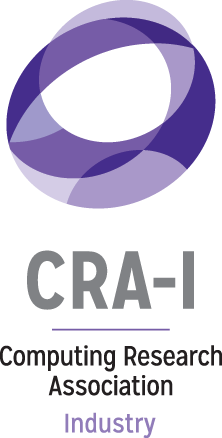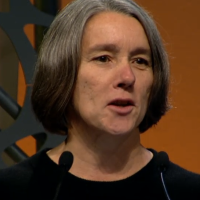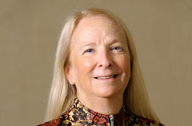Interview with Leah Jamieson
Originally Printed in Winter/Spring 2010 Newsletter
Leah H. Jamieson is John A. Edwardson Dean of the College of Engineering at Purdue University, Ransburg Distinguished Professor of Electrical and Computer Engineering, and holds a courtesy faculty appointment in Purdue’s School of Engineering Education. She served as 2007 President and CEO of the IEEE. She served as co-chair of CRA-W from 1997 to 2000, on the CRA Board from 1998 to 2007, and is a member of the Board of Trustees of the Anita Borg Institute for Women and Technology. She is co-founder and past director of the EPICS – Engineering Projects in Community Service – Program. Her research has focused on speech analysis and recognition; the design and analysis of parallel processing algorithms; and the application of parallel process-ing to digital speech, image, and signal processing. She is a member of the U.S. National Academy of Engineering (NAE) and recipient of numerous awards for research, service, and engineering education. Leah earned her Ph.D. in Electrical Engineering and Computer Science from Princeton University and her B.S in math from M.I.T. She joined the faculty at Purdue in 1976.
Q: As Dean of the College of Engineering at Purdue, what have been your major initiatives/goals and the greatest opportunities to make an impact? What attracted you to strive for this position?
Becoming Dean of Engineering at Purdue felt like the right thing at the right time. Both at Purdue and through activities in IEEE, I was increasingly drawn to “big picture” ideas: What attributes will characterize successful engineers in the future? How do you identify and foster new, interdisciplinary research areas and collaborations?
How is the profession changing and how does education need to change? How will people learn when technology knowledge doubles every few years? How does an institution become global? At the time I decided to become a candidate for dean, I had started the “Engineer of 2020” curriculum initiative at Purdue, had developed a new technologies initiative in IEEE, and was involved in the National Academy of Engineering’s project on public understanding of engineering. Becoming dean felt like the next step.
I’m proud of the sweeping, highly inclusive strategic planning that we have been able to do over the past three years, involving literally hundreds of people at Purdue and around the world. I believe our strategic planning process has led to some powerful ideas – about a continuum of learning that stretches from preschool through life, about opportunities for high-impact research, about models for stimulating collaboration and innovation, and about our own infrastructure and culture. I’m looking forward to the next steps, of converting dreams to actions.
Q: What is the EPICS program and what is its impact?
EPICS is an engineering design program in a service-learning context. Student teams partner with community non-profit organizations to design, build, and deploy technology-based solutions that address community needs. It’s an academic program – students earn credit – that emphasizes the wide range of professional skills that go into successful design. At its start, the acronym stood for “Engineering Projects in Community Service,” but over time, students from more and more disciplines became involved – Purdue’s EPICS program currently has students from 48 majors – so now it’s simply “EPICS.” Ed Coyle and I were the co-founders in 1995. EPICS is now at 20 universities around the world, EPICS High, founded by Bill Oakes, is taking community-based engineering design into high schools (currently in 35 high schools in five states), and IEEE is piloting an IEEE-EPICS partnership that brings working engineers into high schools to mentor students on community-based projects.
EPICS has had an impact on our local community, providing access to technology expertise that would have otherwise been out of reach. It has also had an impact on the thousands of students who have reported that it both developed their skills and affected how they think about engineering. I believe it’s having an impact on how we, as an education community, think about and talk about engineering: that it has become part of the lexicon of experiential education. And I know that it has had a lasting impact on my career – both as an exemplar for how you can embark on a grand adventure and as a critical component in shaping my philosophy of education.
Q: What do you enjoy most about your career right now? What drives you at this point in your career?
I love thinking about what comes next in engineering and technology fields, in education, and for women in our fields. I love the opportunity to talk with colleagues at Purdue, around the country, and around the world about how we can shape the future – and then work with incredibly creative and thoughtful people to move some of those ideas forward. It sounds corny, but what drives me is the hope that I can make a difference.
Q: How have you been involved in CRA-W? What has this involvement meant to you? In what other activities that support women in computing have you been involved?
Let me just start by saying that, without qualification or exception, CRA-W is the professional group with whom I’ve enjoyed working the most in my whole career. Not only is it an amazing group of women, but everyone involved with CRA-W is there to get something done. I joined CRA-W as editor of the “Expanding the Pipeline” column in 1993,” was a mentor in CRA-W’s Distributed Mentor Program, and was a panelist for several of CRA-W’s mentoring workshops. I organized the first CRA-W focus group of women in industry and government research labs and organ-ized the first CRA leadership summit of the chairs of the women’s groups affiliated with professional organizations in computing. I was privileged to serve as co-chair of CRA-W with Jan Cuny from 1997-2000. To me, CRA-W really defined what it means to bring people together around a shared vision and then let the talents and creativity flow. I value what CRA-W has done and I truly cherish the friendships that it helped nurture.
At Purdue, by far the most unusual opportunity I had was to work with Purdue’s Women in Engineering Programs, Women in Science Programs, and Division of Theatre on a series of interactive theater workshops for science and engineering faculty on gender equity and classroom climate. I’ve also been involved in a lot of work, some with IEEE, some with the National Academy of Engineering, certainly a lot at Purdue, about what messages will help us attract girls into engineering and computing fields. This continues to be a passion.
Q: How do you balance work and family?
I don’t think we ever know if we have the balance “right” but we always hope so and always keep working on it. My husband is deputy director of a center at Purdue and my daughter is a junior majoring in chemistry at Smith College. For starters, something simple: my husband and I try to have lunch together whenever we can. It creates a mental pause in the day, a chance to be together. Family balance with our daughter has evolved over time. When Caitlin was growing up, I relied on having wonderful child care so that I could concentrate single-mindedly on work when I was at work and enjoy time with her when I was at home. As she got older, I think that blurring the distinction between work and home became a key part of the strategy. I’d talk with her about my work – it’s easy to talk about speech recognition, what makes sounds different from each other, how do people make sense out of garbled speech? EPICS was also a part of this blurring: it was easy and natural to talk with her about what we were trying to do, and it helped a lot that her elementary school was a community partner for an EPICS project and that she was involved in the projects related to girls and technology that EPICS was doing with the Anita Borg Institute. I think the fact that she’s always had a pretty good idea of what I do has helped keep us close. Also some simple things: when I traveled, I’d call home every evening and we’d talk – sometimes for hours. We still talk, but also email and text. And I always have been, and probably always will be, a big believer in vacations. It’s time together, shared memories, a different pace. As soon as we finish one, we start planning the next one.
Q: What challenges have you had to overcome as a woman leader in the field?
A sense of isolation has probably been the most constant challenge. When I was a grad student, sometimes feeling different from everyone around me and wonder-ing what in the world I was doing. Over time, feeling a part of multiple communities (my department, my research communities, IEEE, CRA-W), then as dean, once again finding myself in meetings where I’m the only woman in the room. It’s a reminder that we still have a ways to go.
Q: Do you have any advice for women at any stage of their careers?
Pay attention to what excites you, what brings you joy, and make sure it’s a part of your career and of your life. I’m not suggesting that every day should be perfect – it won’t be – but I am saying that you should follow your dreams.






